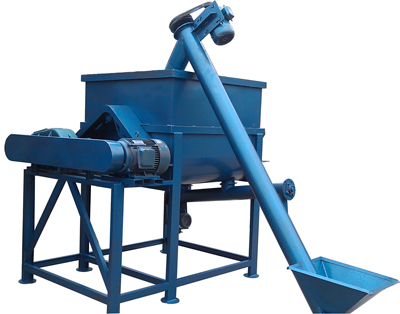Mixer for mixing material
updated by: 2017/10/25 18:35:59¡¡Categories: Screw press ¡¡Viewed by: 3729 times

Mixing can improve the uniformity of particle sizes form hammer mill to keep them in the same particle hardness, which directly improve product quality.
Single Shaft Fish Feed Mixer Feature
1. High homogeneity: this kind of single shaft design reinforces convection, shearing, and mixing effects.
2. Moderate mixing and high uniformity, no segregation.
3. Human friendly: simple and reasonable structure, convenient maintenance, reliable, safe, effective and less investment. The mixer also can be equipped with jacket to facility heating and cooling materials. At the same time, thermal insulation materials also can be installed as required.
Fish Feed Blender Working Principle

Ribbon Blender(also called ribbon mixer) consists of a U-shaped horizontal bucket and a specially fabricated ribbon agitator. The agitator rotates with minimum wall clearance in a U-shaped vessel. A ribbon agitator consists of an inner and outer ribbon which effects a counter flow mass movement with random motion in radial and axial directions: the outer ribbon moves materials in one direction and the inner ribbon moves the materials in the opposite direction. The ribbons rotate and moves materials both radially and laterally to insure thorough blends in short cycle times. That’s to say, mixing action in the double ribbon blender is created by the following 3 factors:
1. Conveying of product by one ribbon from left to right
2. Counter flow of product by the second ribbon
3. Exchange of product between the two ribbons
Top >>
